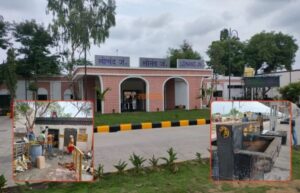
Srinagar, Oct 30: Doctors Association Kashmir (DAK) on Sunday said exposure to air pollution increases the risk of stroke.
“Poor air quality heightens your chances of getting a stroke,” said DAK President Dr Nisar ul Hassan on world stroke day.
Dr Hassan said, according to a new study published in the Journal of Neurology, a short exposure of just 5 days to air pollutants could increase a person’s risk of stroke.
Previous studies have established a link between long-term exposure to air pollution and an increased risk of stroke. But the new study shows that even short-term exposure poses heightened risk.
The study analysed more than 18 million cases of ischemic stroke, which is the most common type of stroke caused by a blood clot that blocks a blood vessel in the brain.
Researchers looked at different pollutants and different sizes of particulate matter.
The analysis found that stroke risk rose 28% when people had been exposed to nitrogen dioxide, 26% when exposed to carbon monoxide, 15% when exposed to sulphur dioxide, and 5% when exposed to ozone.
A higher concentration of PM2.5 was linked to a 15% increased risk of stroke, with PM10 at 14% and PM1 at 9%.
“Higher levels of air pollution were also linked to a higher risk of death from stroke,” he said.
The DAK President said air quality in Kashmir has been constantly deteriorating for the past few years due to the increasing number of vehicles, construction, brick kilns, cement, and other factories that emit pollutants and significantly pollute the air.
“The pollution hits dangerous levels during the winter months due to elevated levels of biofuel emissions from the domestic sector,” he said.
Dr. Nisar said over the years, stroke cases have been on the rise in Kashmir Valley. Not only the elderly, but we are also seeing an increase in the number of strokes among young people.
“While smoking, hypertension, diabetes, and high cholesterol remain important risk factors for stroke, in Kashmir, many people with none of these risk factors come to hospitals with strokes, and air pollution could be a factor,” he said.
“There is an urgent need to create policies that reduce air pollution. That would reduce the number of strokes, which is one of the leading causes of death and disability in the valley,” he added.







